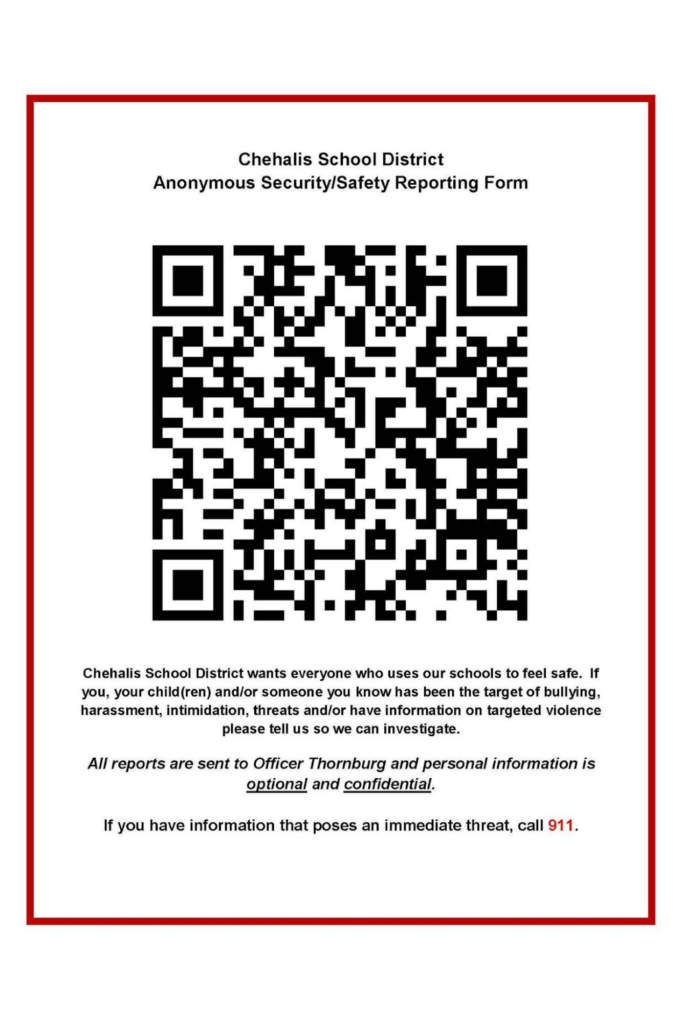Student Safety Is Our Priority
In the Chehalis School District, we take safety seriously. Whether it’s crossing guards helping them get safely to school or staff undergoing training to be prepared in the case of an emergency, the social, emotional and physical safety of our students is a priority for all staff. Our safety initiatives are led by Security & Safety Officers Todd Thornburg and Troy Thornburg.
Chehalis School District’s Safety Measures
Two Security & Safety Officers who patrol our schools and plan safety measures
Navigate 360 ALICE Training for all staff and students
- More than 300 cameras throughout Chehalis School District property
- Collaboration with local law enforcement on training and strategies for deterring crime on campus
Offering anonymous reporting forms to encourage students to report illegal activities they witness
What You Can Do To Help
Report any potential threats. If your student witnesses a threat at school or online, report it to our Security & Safety Officers or school administration
Read more about ALICE Training so you can understand how your student is prepared to stay safe at school
In the event of an emergency, do not come to the school or attempt to pick your student up early. Wait for official Chehalis School District communication through Remind for instructions
For questions about disciplinary policies:
Helpful Links

More Safety Information
Cyber Safety Cop – Digital citizenship and safety information for parents and students
Tall Cop – Helpful safety information for parents





